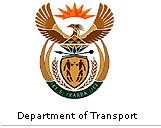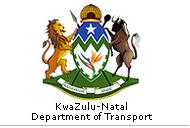MARSHALLING YARDS, LOCOMOTIVES AND RELATED FACILITIESThere are several important marshalling yards in KwaZulu-
Natal. The most important are described briefly below: Railway Yards (for freight traffic)Bayhead (Durban)
The main marshalling yard for Durban is at Bayhead.
This very large yard has north and south sections with
further sub-divisions into five units The north section
alone comprises over 45 roads and is served by a hump to
reduce shunting requirements. The Umbilo electric running
shed is located adjacent to the yard on the north-east
side, while the very large former PX shed is located on to
the south-west of the north yard. Container trains use the
Kings Rest yard and can by-pass the Bayhead yard for
access.
Kings Rest (Durban)
This is the yard which serves the Durban Container
Terminal. It is used for incoming and
departing container trains, normally consisting of 50
wagon air-brake trains each with a capacity of 100
TEU’s.
There are over 30 roads in the main yard which is largely
electrified. Clairwood (Montclair)
This yard is used for incoming timber traffic, liquid
fuel traffic and for automobile trains. There are some 10
roads in the yard
Cato Ridge
This yard is not large in terms of the number of roads
but it is used for long air- brake trains arriving with
ore from up country. This consists of over 550,000 tons of
manganese ore which is processes into nearly 200,000 tons
of Ferro Manganese for export at Durban. Masons Mill (Pietermaritzburg)
Masons Mill yard is used mainly for the over 600,000
tons of forestry traffic originating on the branches to
Kranskop, Franklin, Richmond, and the sub-branches along
these routes. Grain traffic which is received from the
north and south is transferred to Victoria yards from
where it is distributed by haulier trains to the Willowton
industrial area.
Victoria (Pietermaritzburg)
This relatively small yard is the staging point for
traffic to and from the Willowton Industrial area, located
north of the N3 highway and bounded by the R33 to
Greytown. The yard itself is immediately north of the city
centre and is also used to load forestry product traffic.
Danskraal (Ladysmith)
Danskraal yard is strategically located to serve train
on the Free State main line and the Glencoe –
Vryheid
line. It is also a crew change point for main line trains
and there is an electric locomotive running shed and a
maintenance depot for infrastructure requirements
including permanent-way work. Newcastle
The present Newcastle yard was established during the
1970’s when the Newcastle steel mill was moved to
its
present location to the north-east of Newcastle itself.
This included the construction of a completely new line by-
passing the town centre and connecting in the north
adjacent to the new steelworks.
The yard is used mainly for traffic to the large
industrial establishment at Rooipunt and adjacent to the
Utrecht line running eastwards. Traffic to some of the
industrial establishments including a cement factory
producing, amongst other products, over 450,000 tons of
slag iron destined to Mount Vernon (in Durban)
Vryheid East (Coal Line)
Vryheid East is a large yard catering for Richards Bay
coal traffic, since some of this originates at stations
between Ermelo and Vryheid and must be consolidated into
long loads. It also caters for coal traffic from the
Hlobane branch, as well as over 800,000 tons of imported
coking coal from Richards Bay and destined for the
Newcastle steel works.
Finally, increasing volumes of forestry traffic
originating from Mpumalanga including the Barberton,
Graskop and Lothair branches is consolidated into long
loads at Vryheid East. How the recent forest fires in
Mpumalanga will affewct this traffic is not certain at
this stage but it appears that it will have a negative
effect on the traffic. Empangeni
The Empangeni yard is relatively small and has been
superseded to a degree by the opening of the coal line and
Nseleni yard. Sugar cane traffic from the Nkwalini branch
transits this yard and wagon repair work is undertaken at
this point.
Coal Terminal (Richards Bay)
This yard is at the coal terminal on a line which is
on a loop. Export coal trains cross the old Empangeni
–
Golela line at Nseleni. And travel down a dedicated line
to
the coal terminal on the south side of Richard’s Bay
itself. The yard feeds the coal terminal which is operated
by a private company and which off-loads coal by way of
rotary tipplers. There are four such tandem tipplers which
have a capacity to offload 5 500 tons an hour while the
stockyard can store up to six million tons of coal. With
the increasing coal traffic, this terminal and its
associated rail infrastructure it to be enlarged in the
near future. Richards Bay Harbour Yard
This is the main yard for the multi-purpose Dry Bulk
Terminal. It serves the terminal which has a capacity to
handle four million tons of exports and six million tons
of imports a year. A significant amount of export traffic
arrives at the yard in its raw state and is
‘processed,’
such as roundwood which is delivered to private sidings,
chipped, and fed to the port itself by large overhead
conveyor systems. Other traffic including chrome, ferro-
chrome, titanium slag, vermiculite and steel is brought
from the yard to the quayside for handling to ships.
Nseleni (Richards Bay)
Nseleni yard is a staging point for traffic including
rock phosphate, magnetite, vermiculate, copper and
containers arriving from the north-east on the line from
Komatipoort through Swaziland to Golela. It is also used
for roundwood traffic routed over the coal line. There is
a large diesel shed and repair facility and it is an
important crewing point. Motive Power and Train OperationsElectric locomotives in use on the Durban-Gauteng
main
line are generally supplied from Gauteng and maintained in
that province but there is a locomotive operating and
maintenance depot at Danskraal (Ladysmith) which caters
for locomotives used on the Free State line and the line
from Glencoe to Vryheid. The Umbilo shed at Bayhead caters
for electric locos used on the North and South Coast
lines, as well as local electric shunting services.
There are diesel maintenance facilities located at
Wentworth (in Durban), Masons Mill (in Pietermaritzburg)
and Nseleni near Richards Bay. They are described in the
Maintenance of infrastructure and rolling stock section.
|



